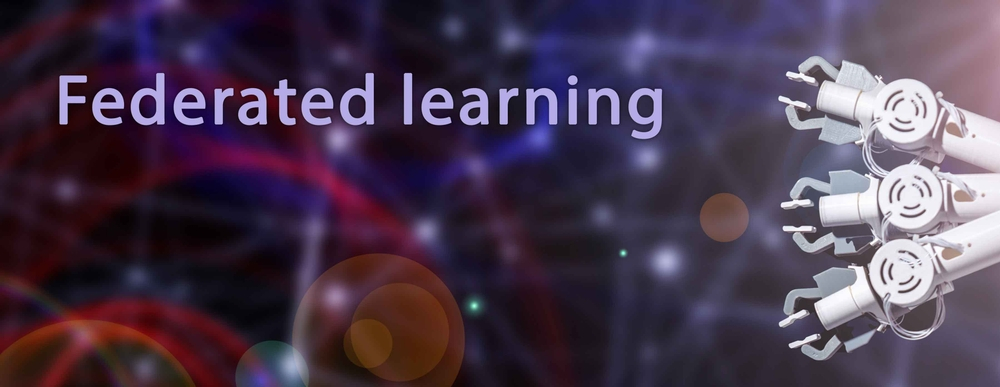Highlights:
- Federated Learning and Classical Machine Learning represent two separate paradigms within the realm of data-driven decision-making in business.
- Federated learning acts as a driving force behind a significant revolution in how data is utilized, safeguarded, and optimized within business operations.
Enhancing artificial intelligence often requires extensive training on large datasets, which commonly involves aggregating and sharing data in a centralized repository. Nevertheless, this approach raises concerns when dealing with sensitive, regulated, or unwieldy datasets.
To address this challenge, federated learning in AI emerges as a strategic solution. Federated learning (FL) represents a distinctive, decentralized methodology within the realm of machine learning (ML), strategically crafted to facilitate synergy, all while mitigating the potential hazards associated with jeopardizing ML algorithms or confidential data without necessitating the transfer of large datasets.
What is Federated Learning, and How Is It Game-changing?
Fundamentally, federated learning serves as a catalyst for a profound transformation in the way data is harnessed, secured, and optimized. This paradigm shift not only empowers businesses to navigate intricate data landscapes but also propels them to the forefront of AI advancements and competitive distinction. Let’s delve into the variations of federated learning:
- Federated learning (FL) treats every IoT device as a distinct client entity at the edge, conducting model training without transmitting raw data. This signifies that within the FL procedure, each IoT device solely collects the pertinent information essential for fulfilling its designated task.
- Federated learning models adapt to new situations without retraining, drawing from past experiences for predictions. Insights from one domain can enhance another, showcasing the method’s versatility.
- Besides data security, issues like network unavailability on edge devices can impede dataset merging. Federated learning allows accessing diverse data even when sources communicate intermittently.
- Federated learning (FL) employs simpler hardware setups since its models don’t require a complex central server for data analysis.
- Federated learning emerges as a pivotal technology, empowering data scientists and companies to uphold privacy and tap into more data sources. This expanded access facilitates the development of higher-quality AI models, thus elevating the potential return on investment (ROI) for AI and data science projects.
Federated learning sets the stage for innovative strategies, data-driven decision-making, and sustainable growth in an increasingly dynamic business environment by ushering in this new era.
Federated Learning Vs. Classical Machine Learning
Federated learning and classical machine learning stand as two distinct paradigms in the domain of data-driven decision-making. These approaches diverge significantly, shaping the landscape of how organizations harness insights from data. Let’s have a brief differentiation between the two:
| Category | Federated learning | Classical machine learning |
|---|---|---|
| Data Distribution | Data is distributed across devices at the network edge. | It follows a centralized approach, with data stored on a central server. |
| Data Privacy | Preserving data locally ensures security and compliance, fostering collaborative model training. | It has centralized data storage, which can lead to security concerns. |
| Aggregation of Data Sets | Models are continuously upgraded with client input; there is no need to aggregate data for ongoing improvement. | It centralizes user data for ML training, potentially breaching privacy rules. |
| Data Sharing | It involves decentralized devices storing local data samples and training without data sharing. | Data is centralized for training and analysis. |
| Deployment | More suitable for distributed and diverse environments. | Easier centralized deployment in controlled environments. |
| Suitable | It is suited for scenarios with centralized data availability. | Ideal for privacy-sensitive scenarios and edge devices. |
| Data Identity | Local data storage protects individual data identity. | Centralized data management can compromise identity. |
Discussing federated learning vs. classical machine learning, the distinctiveness of federated learning is clearly visible in its capacity to leverage the combined expertise of distributed devices while upholding the integrity of individual data sources. This unique characteristic positions federated learning as an appealing option for industries seeking collaborative insights without compromising the essential aspect of confidentiality.
Illustrative Examples of Federated Learning Within the Realm of AI
In the context of the AI realm, federated learning stands as a revolutionary method for training models and making the most of data. Let’s discuss some federated learning examples in the context of AI:
-
Tailored Marketing
Retail establishments can harness the potential of federated learning to construct AI models that provide individualized product suggestions to customers, drawing from their preferences and historical purchase data.
Result: This strategy elevates customer engagement by delivering heightened relevance and truly personalized shopping experiences. This is a potent federated learning example within the realm of artificial intelligence (AI).
-
E-Learning Advancements
Through the utilization of federated learning, the potential of AI-driven educational platforms is expanded, ushering in a realm where tailored learning paths for students become the norm while maintaining the confidentiality of their individual performance metrics intact.
Result: This progression not only enhances educational experiences but also strengthens adherence to data privacy principles, establishing a comprehensive framework for B2B engagement. This is how federated learning in AI works.
-
Drug Discovery
In a collaborative effort, pharmaceutical enterprises can harness AI’s potential to create drug discovery models. This involves aggregating data from diverse research centers, ensuring the confidentiality of sensitive chemical information remains paramount throughout the process.
Result: By adopting this strategic approach, the pace of innovation is expedited while concurrently safeguarding proprietary knowledge assets.
-
Agricultural Precision
The application of federated learning extends to AI models geared toward optimizing crop yield. This involves the collection of data from diverse farms, all the while meticulously upholding data privacy protocols.
Result: This strategic adoption guarantees elevated agricultural performance and the safeguarding of critical, confidential data. It is the best example of AI federated learning.
-
Enhanced Data Privacy in AI
Federated learning safeguards sensitive user data by allowing AI applications to learn locally on devices, eliminating the need for central data repositories. This is vital for services like predictive text, voice assistants, and personalized recommendations.
Result: It provides improved security.
Conclusion
As industries increasingly rely on AI-driven insights to steer their decisions, federated learning emerges as an indispensable catalyst that harmonizes AI’s innovation potential with the pivotal requirement for privacy. It defines what is federated learning in AI in this dynamic age.
This methodology not only ensures the confidentiality of information but also amplifies the richness of data sources, culminating in models that are exceptionally accurate and resilient.
Finally, federated learning in AI serves as a crucial link between innovation and privacy. Its role as an essential strategy underscores its importance in shaping the AI landscape.
Expand your knowledge on such matters by exploring our extensive selection of AI-related whitepapers.





























































